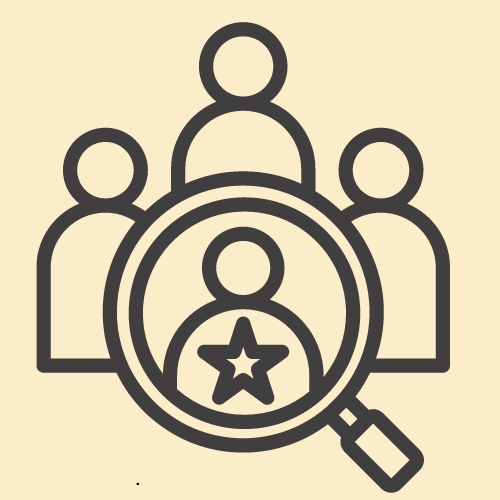Unleashing the Power of AI: Transforming Talent Sourcing in Recruitment

When confronted with millions of job posts, data scraping API saves time not only for eager candidates in finding their dream jobs but also for businesses and organizations in analyzing the competitive market.
Job scraping tools collect data to observe market trends, monitor job listings from competitors, and discover new job post schemes and trends.
Let’s explore how a job scraping API works, what data it offers, and ways to incorporate this API in rising and successful businesses.
In this article
What is AI Sourcing?

AI sourcing represents a technological breakthrough in recruitment, utilizing artificial intelligence to streamline the process of discovering, screening, and engaging potential candidates. AI-powered tools leverage job titles, skills, keywords, and location data to effectively match open positions with suitable candidates across the web.
Once AI sourcing narrows down the candidate pool, these tools facilitate partly automated communication with prospects, enhancing efficiency.
The adoption of AI sourcing tools is on the rise within the recruiting industry, primarily because they significantly reduce the manual effort and uncertainty involved in candidate searches. Traditional methods, which are labor-intensive, typically limit recruiters to a small subset of potential candidates.
AI sourcing enables the quick identification of a broad and qualified candidate pool, substantially increasing the likelihood of finding the ideal candidate for a role.
AI tools automate numerous routine recruitment tasks—such as conducting searches, screening applicants, and initiating contact. This automation allows recruiters to devote more time to higher-value activities that require critical thinking and interpersonal skills, such as engaging directly with candidates. This not only improves the recruitment process but also enhances the overall efficiency and effectiveness of hiring strategies.
What is a Job Scraper API?

Essentially, a job scraping API is a tool that grants companies quick access to specific publicly available job data on demand. For a deeper understanding of this system, let’s break down what job scraping is and why we use an API.
Job scraping is an automated extraction of job postings across the whole web. How does it work? A user inputs a URL into a scraper tool, and the tool converts the entire website into data. The data can then be downloaded in structured formats (CSV, JSON, HTML) suitable for spreadsheets and databases.
API (application programming interface) is a collection of systems, functions, and procedures that allows for two or more applications to communicate with each other. Since job scraping takes place in various software, an API eliminates the need for converting all data, as it swiftly scrapes and displays all data in a structured way in a selected format. A recent study showed that a large percentage, 90% of developers, use APIs in some capacity.
What data do job scrapers collect?

Job scraping occurs on hundreds of thousands, even millions, of websites with job posts. Some of the most common fields of data extracted from these job postings are:
- Job title
- Company hiring
- Job location
- Position description
- Job type (full-time, part-time, in-office, remote)
- Salary range
- Employment requirements
All of this data can be manually found on LinkedIn, company career pages, job boards, an applicant tracking system, or other small niche job boards. Career pages are specific to companies and contain job posts relevant to those companies.
Job boards serve as a great place to find job postings across many companies, locations, and professions. Applicant tracking systems allow scraping company job postings without having to visit each career page separately.
While all of these sources are great on their own, there is a much easier and better solution in the form of job scraping API, which contains all of the data from the sources listed above in one place and in an easily readable structured form. A study showed that a hiring cycle can be 60% shorter with an optimized recruitment process, that type of optimization can be reached with a job scraping API.
How businesses can use job scraping data
63% of hiring managers and talent specialists claim that AI such as job scraping API has positively changed how recruiting is controlled at their company. Let’s look at some of the positive changes and benefits companies can expect from job scraping API:
Determine suitable salaries
With access to data about job postings, you can analyze what other companies are offering, starting from job age requirements up to a detailed salary description. While job requirements are distinct for every company, a salary should stay competitive. The salary you set should meet the job requirements and stay in a set range that’s ideal for the market.
Understand employee attitude
Job posting sites don’t stop at job postings, many of them also include employee reviews of companies. Job seekers can read these reviews and understand the social environment or company culture before applying for the job.
Beyond warning job seekers about bad bosses, these reviews are informative for the company itself. By scraping company review data, organizations have a wider view of their bad qualities and their overall work culture.
Stay ahead of the competition
Whatever business process it is, companies need to stay competitive in all routes, including job posting. Job requirements, company policies, salaries, and job type trends shift constantly, therefore staying updated is key. With APIs, you get the freshest job posting data, which will help you refresh exciting jobs and stay on top of trends such as one can become a network support tech and having an advantage over others.
Wrapping up
The online job repository is constantly expanding, and so are the technologies around it. More and more companies are discovering new ways to harness job data and use it so it benefits their business. The ultimate solution now is job scraping API, it’s a simple way to leverage all job listings data in one structured database.
FAQ
What is talent sourcing with AI, and how does it work?
Talent sourcing with AI refers to the use of artificial intelligence (AI) technologies and algorithms to identify, attract, and engage potential candidates for job openings. AI-powered talent sourcing platforms analyze vast amounts of data from various sources, including resumes, social media profiles, and professional networks, to identify candidates who match specific job requirements and qualifications.
What are the benefits of using AI for talent sourcing?
Using AI for talent sourcing offers several benefits, including increased efficiency, enhanced candidate targeting, improved candidate quality, and reduced time-to-fill. AI algorithms can quickly sift through large candidate pools, identify top talent, and provide recruiters with actionable insights to streamline the hiring process.
How does AI improve candidate matching in talent sourcing?
AI improves candidate matching in talent sourcing by analyzing candidate data, including skills, experience, and preferences, against job requirements and hiring criteria. AI algorithms use machine learning techniques to identify patterns and correlations, allowing recruiters to find candidates who are the best fit for specific roles more accurately.
What AI technologies are commonly used for talent sourcing?
Common AI technologies used for talent sourcing include natural language processing (NLP), machine learning (ML), predictive analytics, and semantic search. These technologies enable talent sourcing platforms to understand and interpret unstructured data from resumes, job descriptions, and candidate profiles, facilitating more effective candidate matching and engagement.
How can AI help automate candidate outreach and engagement?
AI can help automate candidate outreach and engagement by using chatbots, email automation, and personalized messaging to interact with candidates throughout the recruiting process. AI-powered chatbots can answer candidate inquiries, schedule interviews, and provide updates on application status, improving the candidate experience and saving recruiters time.
What role does data privacy and ethics play in AI-driven talent sourcing?
Data privacy and ethics are essential considerations in AI-driven talent sourcing to ensure compliance with regulations such as GDPR and protect candidate privacy rights. Recruiting teams must adhere to ethical guidelines and transparently communicate how AI technologies are used in talent sourcing to maintain trust and transparency with candidates.
How does AI help identify passive candidates in talent sourcing?
AI helps identify passive candidates in talent sourcing by analyzing online activity, social media profiles, and professional networks to identify individuals who may not be actively looking for job opportunities but possess desirable skills and experience. AI algorithms can detect signals of potential interest or job dissatisfaction, allowing recruiters to engage passive candidates effectively.
What are some challenges associated with AI-driven talent sourcing?
Challenges associated with AI-driven talent sourcing include bias in algorithmic decision-making, data privacy concerns, reliance on AI tools without human oversight, and the need for continuous training and validation of AI models. Overcoming these challenges requires a thoughtful approach to AI implementation and ongoing monitoring of outcomes to ensure fairness and effectiveness.
How can recruiters leverage AI insights to improve talent sourcing strategies?
Recruiters can leverage AI insights to refine talent sourcing strategies by analyzing data trends, candidate behavior patterns, and performance metrics. AI-driven analytics provide recruiters with actionable insights to optimize sourcing channels, target candidate segments more effectively, and make data-driven decisions to attract and retain top talent.
What are some AI-powered tools and platforms for talent sourcing?
There are several AI-powered recruitment tools and platforms available for talent sourcing, including applicant tracking systems (ATS), candidate relationship management (CRM) software, and AI-driven talent marketplaces. These platforms offer features such as resume parsing, candidate matching, predictive analytics, and automated candidate engagement to streamline the recruiting process and improve hiring outcomes.
How does AI help overcome biases in talent sourcing?
AI helps overcome biases in talent sourcing by removing subjective decision-making and relying on data-driven insights to evaluate candidate qualifications. AI algorithms can identify and mitigate biases in job descriptions, candidate screening, and hiring decisions, promoting fairness and diversity in the recruitment process.
What role does natural language processing (NLP) play in AI-driven talent sourcing?
Natural language processing (NLP) enables AI-driven talent sourcing platforms to understand and interpret human language, including resumes, job descriptions, and candidate communications. NLP algorithms extract key information, identify relevant skills and experiences, and facilitate accurate candidate matching based on semantic context.
How can AI-powered talent sourcing enhance diversity and inclusion initiatives?
AI-powered talent sourcing enhances diversity and inclusion initiatives by promoting unbiased candidate selection, expanding candidate reach across diverse talent pools, and proactively identifying underrepresented candidates. By leveraging AI algorithms to prioritize skills and qualifications, recruiters can mitigate unconscious biases and foster a more inclusive hiring process.
What are some AI-driven strategies for talent pipelining and succession planning?
AI-driven strategies for talent pipelining and succession planning involve proactively identifying and engaging high-potential candidates for future roles within the organization. AI algorithms analyze internal talent data, performance metrics, and career aspirations to identify candidates with the skills and potential to fill key positions, enabling organizations to cultivate talent pipelines and succession plans effectively.
How does AI support personalized candidate experiences in talent sourcing?
AI supports personalized candidate experiences in talent sourcing by tailoring communication, job recommendations, and content based on individual preferences and interests. AI-powered chatbots and recommendation engines engage candidates with relevant opportunities, provide timely feedback, and deliver a seamless and personalized recruitment journey.
What are the cybersecurity considerations when using AI for talent sourcing?
Cybersecurity considerations when using AI for talent sourcing include protecting sensitive candidate data, securing AI algorithms and models from cyber threats, and ensuring compliance with data protection regulations. Organizations must implement robust security measures, encryption protocols, and access controls to safeguard AI-driven talent sourcing platforms and prevent unauthorized access or data breaches.
How can AI-driven talent sourcing contribute to workforce planning and strategic decision-making?
AI-driven talent sourcing contributes to workforce planning and strategic decision-making by providing real-time insights into talent availability, market trends, and skills gaps. AI analytics help organizations forecast future hiring needs, identify emerging skill requirements, and align talent strategies with business objectives to drive organizational agility and competitiveness.
What are the limitations of AI in talent sourcing, and how can they be addressed?
Limitations of AI in talent sourcing include algorithmic biases, reliance on historical data, and challenges in assessing soft skills and cultural fit. Addressing these limitations requires continuous monitoring and evaluation of AI models, incorporating diverse datasets, and combining AI insights with human judgment and intuition to make informed hiring decisions.
How does AI-driven talent sourcing impact recruiter roles and responsibilities?
AI-driven talent sourcing transforms recruiter roles and responsibilities by automating repetitive tasks, such as resume screening and candidate outreach, and enabling recruiters to focus on high-value activities, such as building relationships, conducting interviews, and strategic talent planning. Recruiters become strategic partners, leveraging AI insights to enhance candidate experiences and drive hiring outcomes.
What are the future trends and developments in AI-driven talent sourcing?
Future trends in AI-driven talent sourcing include advancements in predictive analytics, augmented reality (AR) for candidate assessments, and the integration of AI with blockchain technology for secure candidate verification. Additionally, AI-driven talent marketplaces and gig platforms are expected to evolve, offering on-demand talent sourcing solutions and facilitating talent mobility in the gig economy.
Top AI Marketing Generators
Master the Art of Video Marketing
AI-Powered Tools to Ideate, Optimize, and Amplify!
- Spark Creativity: Unleash the most effective video ideas, scripts, and engaging hooks with our AI Generators.
- Optimize Instantly: Elevate your YouTube presence by optimizing video Titles, Descriptions, and Tags in seconds.
- Amplify Your Reach: Effortlessly craft social media, email, and ad copy to maximize your video’s impact.